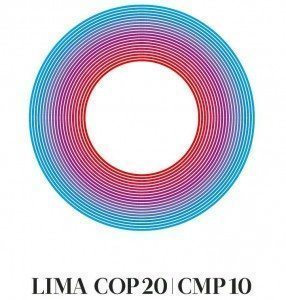The long road to Paris begins –
 It seems little has changed in the negotiating process at the latest Conference of the Parties in Lima, Peru. Negotiations spilled into a marathon extended session at the COP 20 climate talks, finally ending Sunday morning, 31 hours after the scheduled end of the two-week conference, with what many call a “watered down” agreement. Sound familiar? It should. It has been the modus operandi for international climate negotiations for years.
It seems little has changed in the negotiating process at the latest Conference of the Parties in Lima, Peru. Negotiations spilled into a marathon extended session at the COP 20 climate talks, finally ending Sunday morning, 31 hours after the scheduled end of the two-week conference, with what many call a “watered down” agreement. Sound familiar? It should. It has been the modus operandi for international climate negotiations for years.
The principal goal for COP 20 was to produce a framework for Paris, where it is hoped that a final, binding international climate accord can be signed by the 194 participating countries at COP 21 next December. Depending on who you ask, the Lima Call for Climate Action is either an important first step on the road to Paris or just another weak, disappointing outcome from a flawed, ineffectual process. What is clear is that the road from Lima to Paris is a long one.
Common but differentiated responsibilities
The same overarching issue lay at the heart of the contentious conclusion in Lima that has bedraggled the task of forging a post-Kyoto Protocol agreement: the role of shared burden between developed and developing nations.
The Kyoto Protocol, adopted at the COP 3 conference in 1997 and ratified in 2005, made no provisions for developing nations to curb their emissions, instead focusing on developed nations already responsible for most carbon emissions.
With the rapid expansion of many developing world economies, especially China, addressing the growing emissions from the developing world and the shared responsibility of all nations is key to reigning in global warming in the coming decades.
But developing countries, many still mired in poverty and most vulnerable to the impact of climate change, charge that rich nations must shoulder much of the responsibility, and cost, for their past emissions and the climate change already baked into the system.
At the first Rio Earth Summit in 1992, the concept of common but differentiated responsibilities was codified in Principle 7 of the Rio Declaration on Environment and Development:
States shall cooperate in a spirit of global partnership to conserve, protect and restore the health and integrity of the Earth’s ecosystem. In view of the different contributions to global environmental degradation, States have common but differentiated responsibilities.
The developed countries acknowledge the responsibility that they bear in the international pursuit to sustainable development in view of the pressures their societies place on the global environment and of the technologies and financial resources they command.
Many developing countries rejected early proposed drafts in Lima due to the absence of this stated principle “common yet differentiated responsibilities” in the text.
It was retained in the final draft with the additional rider “in light of different national circumstance.”
Acceptable enough language for all countries but it doesn’t really solve the issue. Todd Stern, lead climate negotiator of the US States Department, said in The Guardian that he expected the issues to come up again in Paris.
Indeed, much of the heavy lifting for constructing a binding accord that everybody can agree on was left for Paris.
Pledges: shall or may
The aspiration expressed in principled text must be supported by numbers, and those numbers must be verified by third parties.
Some hoped that a provision for each country “shall” provide information specifying each nation’s pledge and be formally assessed in advance of COP 21 next year. The approved text changed “shall” to “may, making the requirement more of an option.
As John H. Cushman, Jr. writes in Inside Climate News,
“In order to facilitate clarity, transparency and understanding,” the approved draft reads, a nation’s pledge “may include, as appropriate, inter alia, quantifiable information on the reference point (including, as appropriate, a base year), time frames and/or periods for implementation, scope and coverage, planning processes, assumptions and methodological approaches including those for estimating and accounting for anthropogenic greenhouse gas emissions and, as appropriate, removals, and how the Party considers that its intended nationally determined contribution is fair and ambitious, in light of its national circumstances.”
Instead of a formal review, the pledges will be posted on the internet for public scrutiny one month prior to the Paris meeting. But there’s no formal review what, or if, any country pledges before COP 21.
Paul Bledsoe, a senior fellow at the German Marshall Fund told Insidev Climate News that the final text displayed “an overwhelming desire to keep everyone on board.”
“The debate we witnessed here in Lima is not going to change that much in Paris,” said Alden Meyers, strategy and policy director for the Union of Concerned Scientists.
“What was a storm cloud in Lima could become a full-blown typhoon in Paris. A whole host of issues become a lot more difficult if you have this fundamental split in world view.”
A first halting step to Paris, who has the map?
The Lima Call for Climate Action nods toward shared responsibility to deal with climate change and agrees to meet again next year to hammer it all out. This may be the best we can expect.
It preserves hope for global cooperation in climate action, but doesn’t inspire confidence that we will, in the end, find our way out of the crisis; in Paris, or anywhere else.


